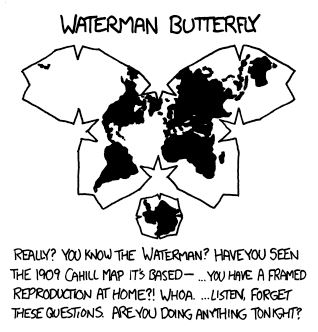- 1 Post
- 53 Comments
the rest of the chocolate chips are sleeper raisins. one click of a button and it’s an oatmeal raisin world.

 5·12 days ago
5·12 days agobehold, a man
you can do anything while gaming
to be fair, computer is an even worse beans coolant
why even use the right hand rule when you can just take a random guess and be right half of the time

 3·20 days ago
3·20 days agothey should do that in real life too
i forgot they had pools and thought this was an anti OOP joke at first
you could think about it this way: one sphere and two spheres have the same “number” of points. (in the same way that there are just as many real numbers as there are real numbers in the interval (0,1).)
so, it becomes “”plausible”” that you could use one sphere to construct two spheres (because in some sense, you aren’t “adding any new points”).
but in the real world, “spheres” only have a finite number of atoms. so if we regard atoms as “points”, then it’s no longer true that one sphere and two spheres have the same number of “points”. and in some sense, this is why the sphere duplication trick doesn’t work in the real world.
it’s also worth mentioning that you have to do some pretty fucked up and unusual things in order to actually duplicate the sphere, and if you don’t allow such weird things to be done to the sphere, then it’s no longer possible to duplicate it, even with the axiom of choice.
yeah this is true. i should have clarified a bit better that a well ordering wouldn’t give you a “least gay” person in that sense of the word. it would be more correct to say there is a well ordering ⊰, and so there is a “⊰”-least gay person. but of course a “⊰”-least gay person could be in the middle of that spectrum.
but the number of people on earth is finite, so in fact the usual ordering is a well-ordering in this case. so i guess those two mistakes i made cancel each other out, and the axiom of choice isn’t even needed here.
oops. you’re completely right. i forgot there are only a finite number of people on earth. there is a gayest person
a consequence of the axiom of choice is that every set can be given a well ordering. and well orderings always have smallest elements, but they may not have largest elements.
so there is someone who is the least gay, but there may not be a single person who is the most gay.
this is just like in watch dogs
oh god number theory… the things they make you do in that class…
× is the cartesian product and = {x, {x,y}} is the ordered pair of x and y. (i.e., if x is in X and y is in Y, then is the corresponding element of the cartesian product X × Y). hope this helps
i’m just not sold on there being a red carpet in that hallway
they never specified the order relation, so we can’t really know what they meant by smallest. for all we know, 10 could be the right answer
there will never be a day in my life where i regret eating olives. they could be poisoned for all i care
it is not about a difference in value, but how they harmonize together. the interior of the pizza gets its strength from the crust, and vice versa, but these elements are only truly in harmony once the pizza achieves an ideal pie/crust ratio.
does this mean you acknowledge the existence of transgender women but not transgender men?